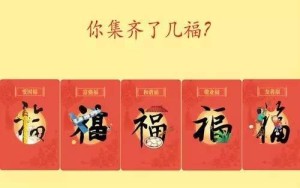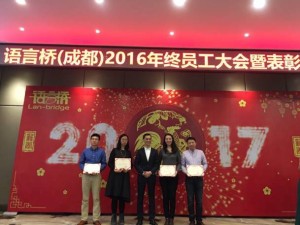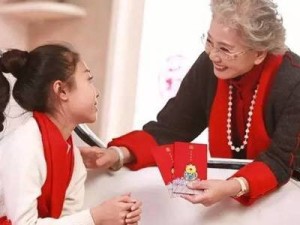- +44 (0)20 8334 8266
- uk@lan-bridge.com
- 中文
The Voice of Lan-bridge (25/01/2017)
The first three quarters of January have already passed and the Chinese New Year is almost here! Let’s take a look at what takes place in different parts of China during this most important of Chinese festivals.

Part 1: A Sample of Some of China’s Regional New Year’s Traditions
In the UK, most people go home for Christmas and the New Year and celebrate in much the same way. However, because China is such a large and diverse land, things here are slightly different. For example, though they work together all year, speaking standard Mandarin and eating much the same food, many of our workers will be going back to celebrate the Chinese New Year (also known as Mid-Autumn Festival) in slightly different ways, in towns where some of their elders will even speak very different dialects. Below is a glimpse of the variety of Chinese New Year’s traditions that different regions have.
Jiangsu: On Chinese New Year’s Eve, locals in Jiangsu add boiled chestnuts to their rice. Friends and relatives get together to drink “ingot tea” and to wish each other good luck and prosperity.
Shaanxi: Here, the locals eat “five beans” (soybeans, soybeans, mung beans, peas, and cowpeas), which are brewed the night before the Spring Festival. This custom stretches back centuries.
Yunnan: Here, they celebrate the Chinese New Year in a similar way to how Han Chinese do, by pasting decorations on their doors. However, their decorations aren’t couplets, as is the case in most of China, but patterns cut from red paper that have been pasted in a unique way to their doors.
Hebei: In the city of Chengde, Spring Festival actually starts on the eighth day of the twelfth lunar month, when monasteries and households meet. They eat laba porridge, which is rice-based porridge made with beans, nuts, and dried fruit) as a memorial to Sakyamuni Buddha Road, and take part in painting and letting off firecrackers. Each family also usually sweeps their courtyard and holds a banquet on the 23rd day. On the 25th day, they post couplets, and the festive atmosphere grows stronger. On the Chinese New Year’s Eve, the whole family get together for a reunion dinner, which includes dumplings, and at midnight they let off firecrackers to welcome the arrival of the New Year.
Tianjin: On the 8th day of the twelth lunar month, people in Tianjin make laba porridge. Many people also enjoy eating garlic that has been soaked in vinegar, known as “Laba vinegar.” Laba vinegar not only tastes like alcohol, but also preserves the garlic.
The Northeast: Here in China’s northeast (Heilongjiang, Liaoning, and Jilin provinces), dumplings are prepared in a special way – with a few amongst each batch having coins hidden in them. Find a coin inside your dumpling is considered good luck.
Shanxi: ‘During dinner, do not speak!’ Despite many customs changing over time, in Shanxi they still retain one unusual one: people under 30 aren’t allowed to speak during dinner!
Guangdong: Here, on New Year’s Eve before people busily prepare all kinds foods and things for the Chinese New Year. They buy chickens, geese, ducks, and fish; purchase new clothes, furniture, and utensils; and buy citrus, green olives and other fruits to give relatives and friends as a symbol of good luck. Another old custom is that before the New Yea men and boys must get a new haircut – so woman often end up spending time being barbers!
Guangxi: Spring Festival is the largest festival of the year in Nanning. People set off fireworks to greet the New Year, and on the second day visit family and friends with gifts. There are temple fairs and people take part in lion dances, chicken dances, spring cattle dances and other activities.
Hubei: In central China’s Hubei province, people begin the first day of the Spring Festival by drinking chicken soup. Many also eat chicken feet, to symbolise “grasping wealth in the New Year”, and chicken wings, meaning that they “hope to soar in the New Year”. In Zigui county, people eat fried white Artemisia for their first New Year celebration meal, which is a homonym of “good”. In the Jingzhou and Shashi area, the first meal is eggs, which represent “good luck.” The eggs are lightly poached, which symbolises “gold in wallets”.
Hainan: On the southern island province of Hainan there is a proverb: “The year is afraid of Chinese New Year, the month is afraid of the fifteenth.” During Chinese New Year, the countryside is ready to “do the year”: castrate roosters, fatten ducks, pen pigs, and prepare to make money. As the lunar calendar progresses in late December, the “doing the year” atmosphere gets more and more intense!
Part 2: Chatting
Last week we at Lan-bridge Group held a year-end staff meeting in our headquarters in Chengdu. With a new year comes new targets, and the internal organizational structure has also changed a little. Change can be sad, but it can also bring new opportunities.
At the end of the year the group leaders also put forward a new slogan: “Customer first, quality priority, implementation in place.” Based on these three points, I believe that in this New Year, we can reach higher goals and achieve more magnificent success in the spheres of translation, interpretation and marketing.

Part 3: Knowledge
Where does the tradition of elders giving youngsters red envelopes (hóngbāo) come from?

There is a widespread version of this tradition’s origins, it runs along these lines: In ancient times, there was a demon called “Chong”, who on the evening of New Year’s Eve set out to touch sleeping children’s heads. The children would often be scared and begin to crying before developing headaches and a fever. Therefore, families wouldn’t sleep, and would stay up by candlelight to protect their children from Chong.
There was a husband and wife with a son. Late on the 30th night of the 12th lunar month, they were afraid of evil Chong harming their child, so they took out eight coins to play with him. However, he eventually fell asleep. They wrapped eight coins in red paper and placed them underneath the child’s pillow. In the middle of the night, a chilly wind blew open the door and blew out the candles; Chong appeared and reached out to touch the boy’s head, but the pillow burst open, and scared the monster away.
Thereafter, the couple knew how to scare away Chong.
“Squeal” and “old” are homophones in Chinese and they gradually evolved to sound like “lucky money.” During the Ming and Qing Dynasties, coloured rope was often given to children to wear, Elders would add money to this rope as a gift. So in some places, giving the child lucky money is still known as giving a “string of money.” In modern times, the tradition of giving a red envelope with 100 coins (to symbolise longevity) has evolved.
Add us on WeChat:

Translated by Kain Jagger





